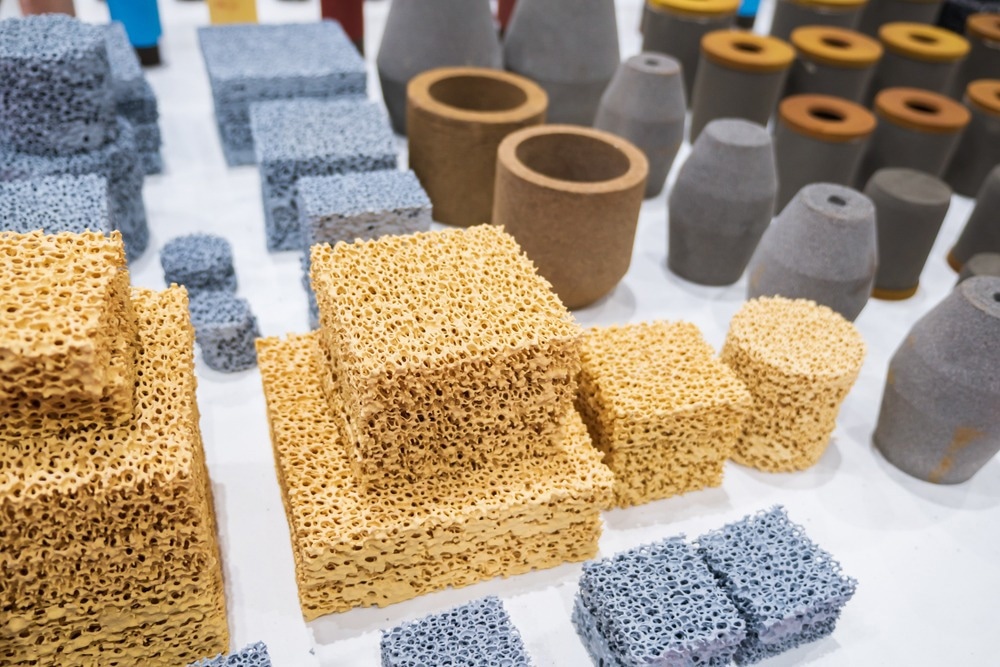The team led by Prof. Chuanfeng Li and Dr. Jinshi Xu from the Chinese Academy of Sciences had success in improving the fluorescence of single silicon carbide spin defects in a study published online in Nano Letters.

Image Credit: socrates471/Shutterstock.com
The researchers used surface plasmons to significantly increase the fluorescence brightness of single silicon carbide double vacancy PL6 color centers, leading to an improvement in the efficiency of spin control utilizing co-planar waveguide features.
This low-cost solution does not require advanced micro-nano processing technologies and does not jeopardize the coherence qualities of the color centers.
Solid-state systems with spin color centers are essential for processing quantum information, and the intensity of their fluorescence is a key variable for real-world quantum applications.
Traditionally, coupling spin color centers to solid-state micro-nanostructures have been used to increase their fluorescence. This approach is used to create solid immersion lenses, nanopillars, bull’s-eye structures, photonic crystal microcavities, and fiber cavities, among other structures.
The difficulty of aligning particular color centers with micro-nano structures and the vulnerability of color center spin characteristics to intricate manufacturing methods remain obstacles.
The researchers invented a new method to boost the fluorescence of spin centers in silicon carbide by using plasmons. Through chemical and mechanical polishing, the researchers created a silicon carbide thin coating with a thickness of roughly 10 micrometers. They fabricated near-surface divacancy color centers in the film using ion implantation techniques.
Using van der Waals forces, the film was turned over and bonded to a silicon wafer covered with a coplanar gold waveguide. This location made it possible for the gold waveguide’s surface plasmons to impact the near-surface color centers, boosting their fluorescence.
The researchers increased the brightness of a single PL6 color center by seven times using an objective lens (with a numerical aperture of 0.85) and the surface plasmon enhancement effect. The fluorescence of the color center topped one million counts per second using an oil lens with a numerical aperture of 1.3.
In addition, the researchers were able to analyze the ideal operating range by accurately controlling the distance between the near-surface color center and the coplanar waveguide by varying the film thickness with a reactive ion etching procedure.
The coplanar gold waveguide could effectively emit microwaves in addition to producing surface plasmons, greatly enhancing the effectiveness of spin control. In comparison to conventional microwave radiation approaches, the coplanar waveguide enhanced the Rabi frequency of a single PL6 color center by 14 times at the same microwave power.
The researchers also looked at the fluorescence enhancement process. They established that surface plasmons increased the fluorescence brightness by raising the radiative transition rate of the color center energy level by fitting the autocorrelation function using a three-level model and observing the non-resonant excitation fluorescence lifespan.
They also discovered that the quenching effect of surface plasmons led to a decline in the fluorescence brightness of the color center as the interaction distance shrank.
The plasmon-enhanced fluorescence from near-surface spin color centers in silicon carbide films is being used for the first time in this work. The coplanar gold waveguide is easily manufactured without complicated alignment procedures or enhancement mechanisms.
By enhancing the fluorescence of additional spin color centers in silicon carbide, this technique advances the use of silicon carbide materials in quantum research.
Journal Reference
Zhou, J.-Y., et al. (2023) Plasmonic-Enhanced Bright Single Spin Defects in Silicon Carbide Membranes. Nano Letters. doi:10.1021/acs.nanolett.3c00568
Source: http://en.ustc.edu.cn/